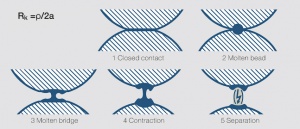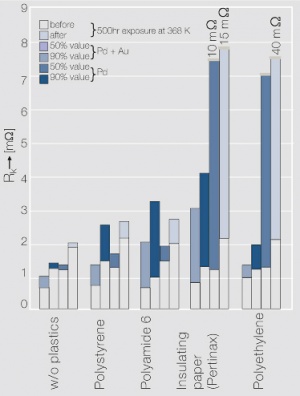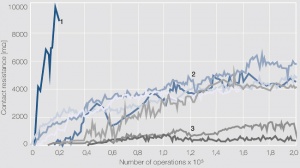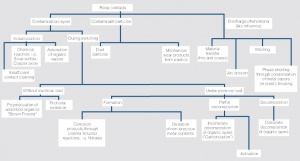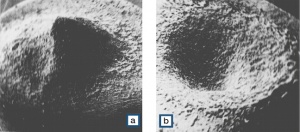Switching Contacts
From Electrical Contacts
Switching Contacts
-
Effects during switching operations
Influence of out-gasing from plastics
Influence of corrosive gases on the contact resistance
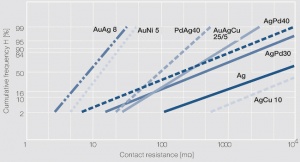
Figure 4: Distribution of cumulative frequency H of the contact resistance for solid contact rivets after 10 days exposure in a three-component test environment with 400 ppb each of H2S, SO2 and NO2 at 25°C, 75% RH; Contact force 10cN; Measuring parameters: ≤ 40 mVDC,10 mA; Probing contact: Gold rivet
Contact Phenomena under the influence of arcing Matertia
-
Material transfer
Arc erosion
Contact welding
